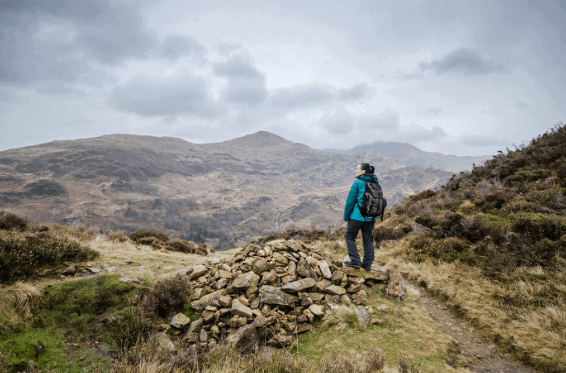Health Literacy, Rural Inequality and Living with Dementia.
I have decided to post more regular blogs, with less specific focus, as each working week is different, and raises varying issues across health and care.
Over the last few days I have been doing the usual, balancing working with different businesses and entrepreneurs across health and care, at the same time as supporting my mother who is living with vascular dementia and would like to share a few thoughts and insights.
Health Literacy

I have had the great pleasure of working with Carse & Waterman Productions over the last few months and we have been investigating opportunities to use the animation to help communication between clinicians, patients and carers. It seems to me that “Addressing health literacy— the ability to understand and act on health information— is one of the most pressing issues in our health care system today. Perhaps one of the most significant challenges we face is to make health information accessible to everyone, regardless of background, education, or literacy level”.
Ref: Journal of American Medical Informatics Association 2005
Improving health literacy to reduce health inequalities published by Public Health England 2015 states
“‘Health literacy’ refers to people having the appropriate skills, knowledge, understanding and confidence to access, understand, evaluate, use and navigate health and social care information and services. In England, 42% of working-age adults are unable to understand and make use of everyday health information, rising to 61% when numeracy skills are also required for comprehension. Health literacy is also influenced by services’ engagement of users and provision of clear, accessible information for all (service responsiveness)”.
We have all grown up watching cartoons, in fact today’s patients from a very young age, are familiar with cartoons. They do not seem them as challenging, threatening or reasons to feel confused or anxious – the same cannot always be said for other forms of patient communication.
“The most expensive medication is the one that’s left on the shelf” is a phrase I often used when working in pharmaceuticals, because the drug has been prescribed, and therefore purchased by the NHS, to treat a patient and improve their health. If the patient doesn’t take their medicine/ follow their treatment regime, the time and cost of the appointments and medicines is wasted.”
In a time of austerity effective communication saves money, and prevents deterioration of health.
A study by Corine S Meppelink et al “The Effectiveness of Health Animations in Audiences With
Different Health Literacy Levels: An Experimental Study” published in the Journal of Medical Internet Research reached the conclusion that:
“spoken animation is the best way to communicate complex health information to people with low health literacy. This format can even bridge the information processing gap between audiences with low and high health literacy as the recall differences between the two groups are eliminated. As animations do not negatively influence high health literate audiences, it is concluded that information adapted to audiences with low health literacy suits people with high health literacy as well”.
It would seem to make logical sense to make animation a standard form of patient communication, so the general population can gain a better understanding of the reasons for, and the value and methods of their treatment.
Rural Health and Care Equity

Watch a section of the video from the Rural Economy Select Committee via Parliament TV Live (link will open in new tab).
Watch the full session is here.
The gaping inequalities between the funding of health and care between rural and urban communities is outrageous. Not only do rural communities receive less funding per head for health and care, we also pay considerably more in council tax. Urban councils receive 40% more money per head from central government than rural councils for social care, and yet residents pay more per band in council tax. There seems to be no accounting for rural challenges of isolation, loneliness, poor public transport, poor road systems, and large geographies.
If you want to get involved visit the Rural Health & Care Alliance Webpage.
Living with Dementia – Christmas is coming

Anyone caring for someone with dementia will know that it is vitality important to keep stress and anxiety to a minimum, otherwise cognitive function goes downhill rapidly. Although Christmas is a time for family, sharing, gifts and excitement for many, for people living with dementia it represents changes in routine, more things and people to remember, and the never-ending challenge of making sure that cards and gifts are organised for people.
Firstly, my mother cannot be persuaded to reduce her list of card or gift recipients, she worries about upsetting people, and won’t accept any logical argument to the contrary – death is the only way off the list.
I know that the day she starts asking about Christmas shopping, is the day she starts worrying, so first week of October, I sat with her and a computer and bought all of her gifts, and cards. The stress reduced almost immediately, so hopefully the lead up to Christmas will be easier.
Just as I was giving myself a pat on the back for overcoming that small hurdle, I visit (to write the Christmas cards) and she is obviously not well. Trip to the GP, antibiotics and a review of care package booked, with an increase to daily visits for a minimum of the course of antibiotics. It is an hour journey each way to her flat which I usually make once a week, my brother also sees her once a week, and a carer visits twice a week, with friends, and hobbies, groups and social activities most days. However, I still think, what if I hadn’t decided to go on Thursday? I normally visit on Friday. How sick would she have become by today?
I had more frequent care visits in place, but my mum decided she didn’t need them and would resist through passive-aggressive tactics including “being asleep”, “not knowing they were coming” and going out. So, I am reduced to another step along the road of child to parent role reversal and telling her what is happening.



